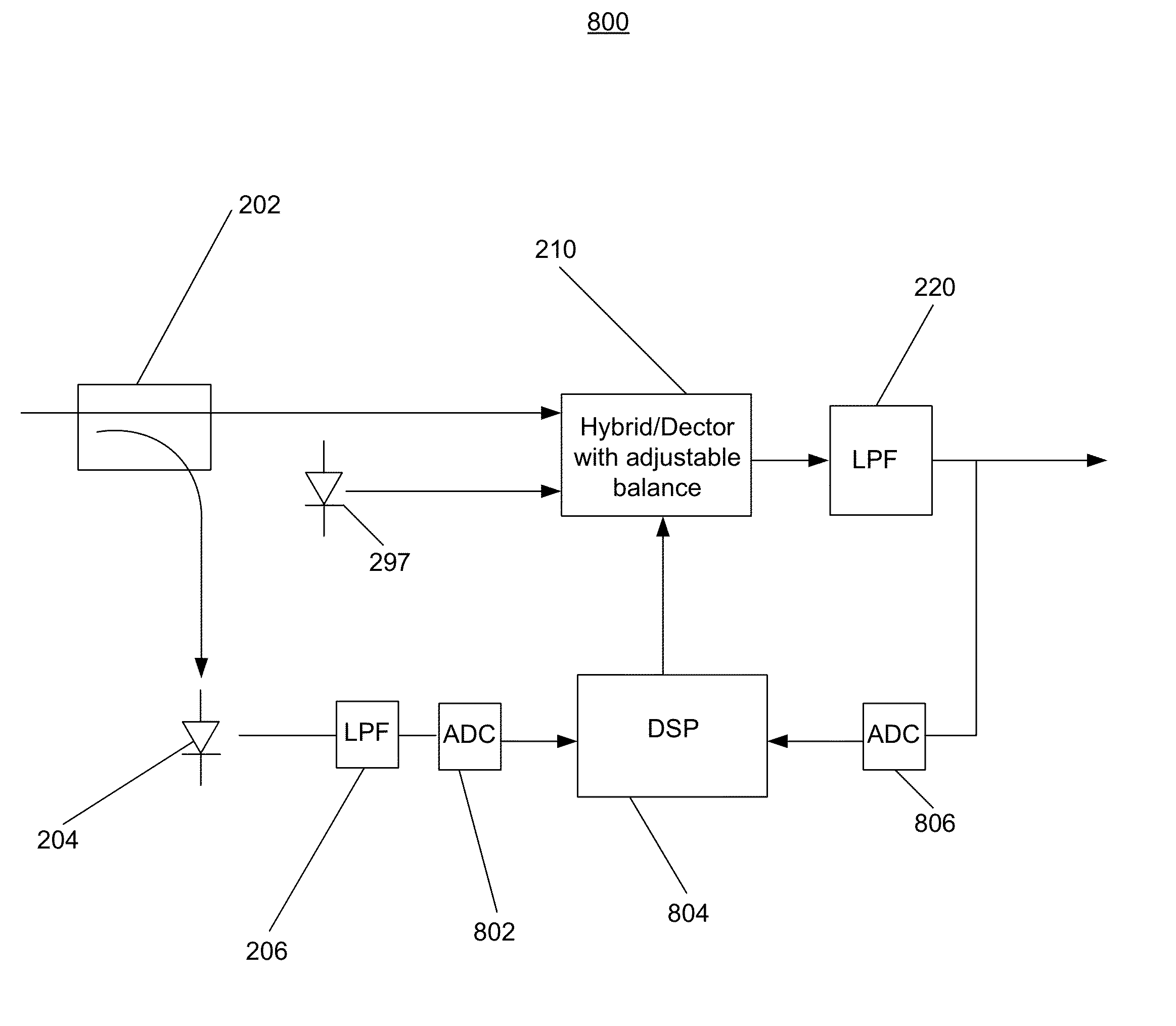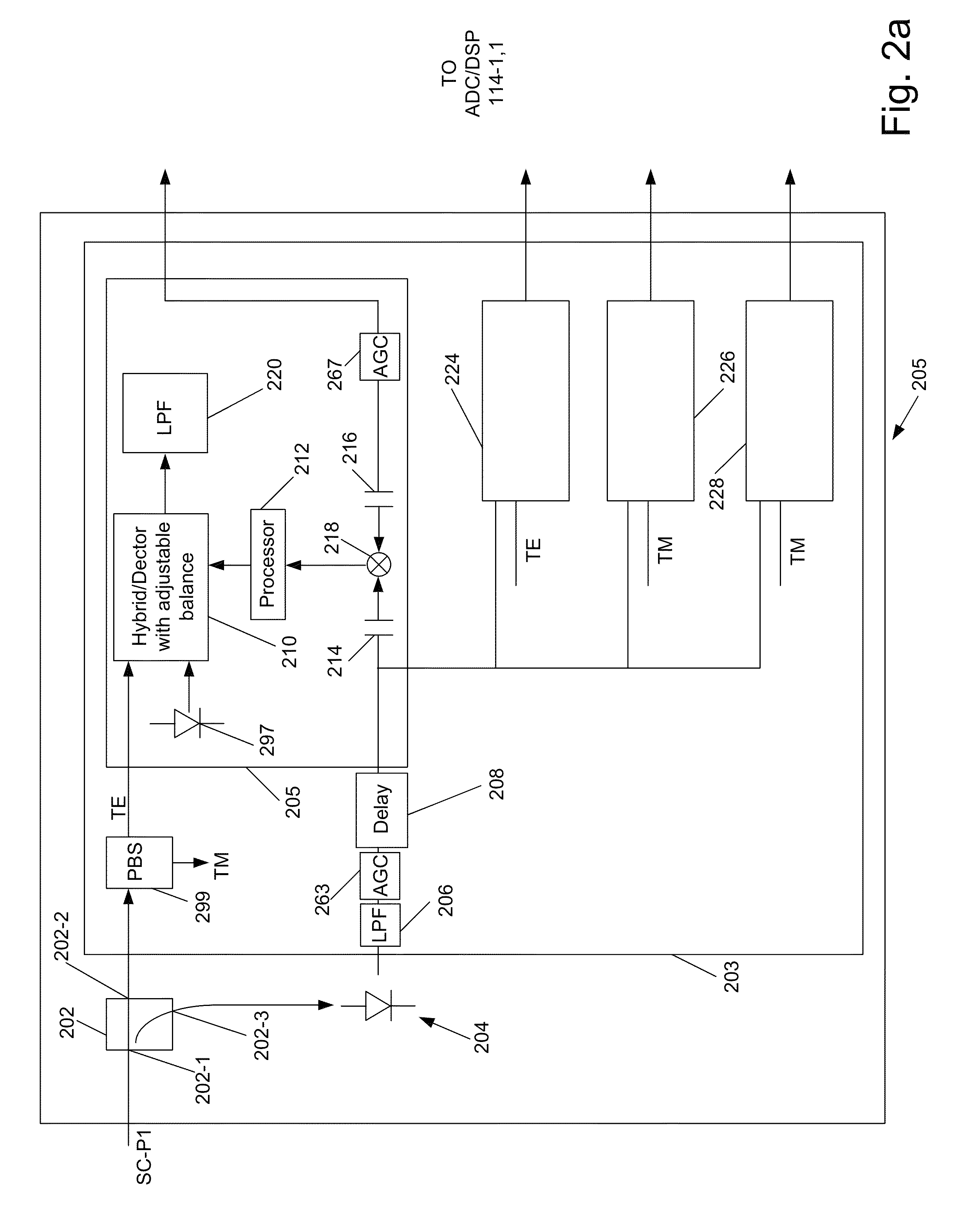Adaptively Balanced Detector
a detector and balanced technology, applied in the field of adaptable balanced detectors, can solve the problems of detector imbalance, inability to achieve balanced detection, and increase the amount of interference caused by detector imbalan
- Summary
- Abstract
- Description
- Claims
- Application Information
AI Technical Summary
Benefits of technology
Problems solved by technology
Method used
Image
Examples
Embodiment Construction
[0025]Consistent with the present disclosure, a coherent detector is provided that includes an optical hybrid that supplies optical signals to a balanced detector. The amount of imbalance or “balance error” (“K” in the above formula) in a balanced detector is identified by determining a difference between an output the balanced detector and an output of a photodiode that receives a portion of an input optical signal provided to the optical hybrid. Based on the balance error, electrical signals generated by the balanced detector or the power of optical signals passing through (or output from) the optical hybrid circuit can be adjusted so that the balance error is minimized or reduced to zero. At this point, imbalance in the balanced detector is corrected so that components of the generated photodiode currents associated with noise in the local oscillator light, as well as the non-selected optical signals in the superchannel, are cancelled out.
[0026]Reference will now be made in detai...
PUM
 Login to View More
Login to View More Abstract
Description
Claims
Application Information
 Login to View More
Login to View More - R&D
- Intellectual Property
- Life Sciences
- Materials
- Tech Scout
- Unparalleled Data Quality
- Higher Quality Content
- 60% Fewer Hallucinations
Browse by: Latest US Patents, China's latest patents, Technical Efficacy Thesaurus, Application Domain, Technology Topic, Popular Technical Reports.
© 2025 PatSnap. All rights reserved.Legal|Privacy policy|Modern Slavery Act Transparency Statement|Sitemap|About US| Contact US: help@patsnap.com



